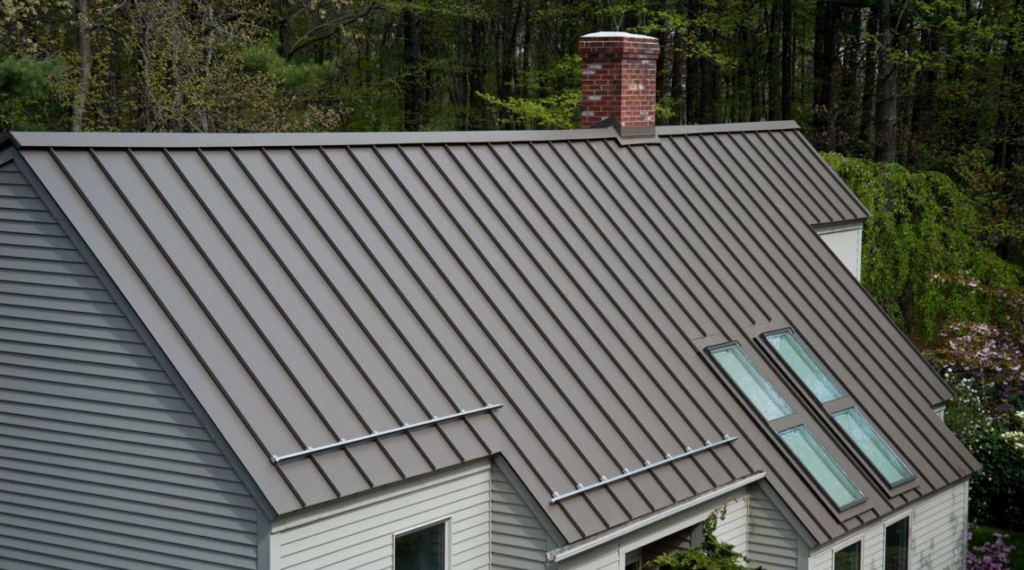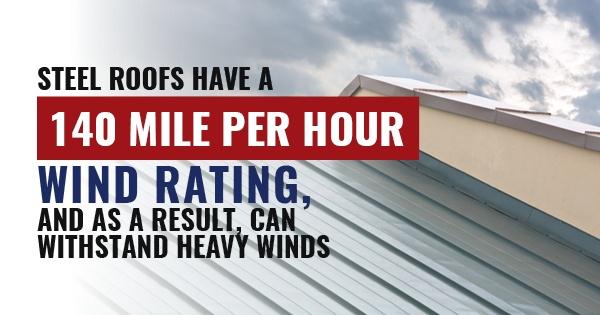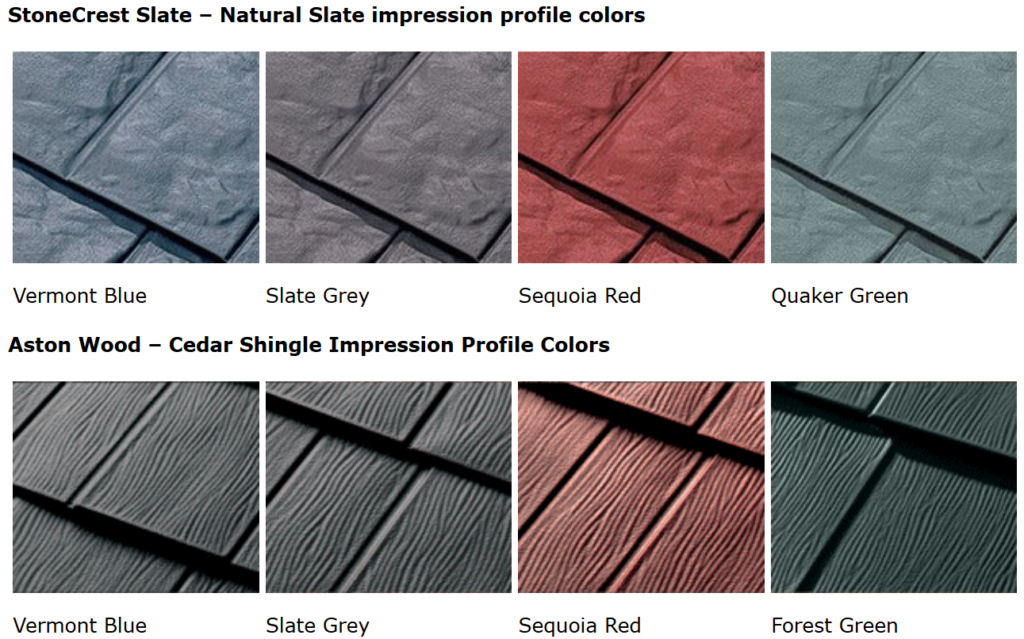
Introduction to Modern Metal Roofing
The landscape of roofing has seen significant transformation over the years, with metal roofing emerging as a standout option for modern construction. Its evolution is marked by advancements in materials, technology, and design, shifting the perception of metal roofing from merely functional to an aesthetically pleasing and durable choice for homeowners and architects alike. Metal roofs have become synonymous with longevity, offering life spans that far exceed those of traditional roofing materials. This durability is not just a matter of material strength but also of innovative engineering that allows these roofs to withstand severe weather conditions, from heavy snowfall to hurricane-force winds, without compromising on their structural integrity or aesthetic appeal.
In addition to their robustness, modern metal roofing materials such as galvanized steel, aluminum, and zinc alloys are lauded for their environmental benefits. These materials reflect sunlight and reduce heat absorption, contributing to energy efficiency and sustainability in building design. This energy efficiency is further enhanced by innovative coating technologies that not only protect the roof from the elements but also contribute to the overall thermal performance of buildings. As the construction industry moves towards more sustainable and energy-efficient practices, metal roofing stands out for its use of recycled materials and its full recyclability at the end of its long service life.
The advancements in metal roofing are a testament to the industry’s commitment to innovation and environmental stewardship. Manufacturers continue to push the envelope with new technologies such as self-healing coatings and integrated solar solutions, signaling a future where metal roofs are not only about protection and durability but also about playing a pivotal role in the energy systems of buildings. As we look to the future, the trend towards customizable options in color, texture, and design promises to keep metal roofing at the forefront of architectural trends, offering a blend of practicality and aesthetic appeal that is hard to match.
For more detailed insights into the evolution and benefits of metal roofing, exploring authoritative sources such as East Lake Metals and Architect Magazine can provide a comprehensive understanding of why metal roofing has become a preferred choice for sustainable building.
Key Features of Advanced Metal Roofing Materials
The key features of advanced metal roofing materials hinge on a blend of durability, aesthetic flexibility, and environmental responsiveness. At the core of modern metal roofing’s resilience are materials like galvanized steel, aluminum, and zinc alloys, each selected for their specific properties. Galvanized steel, known for its robustness against corrosion, is treated with a protective layer of zinc to further enhance its lifespan. Aluminum, lightweight and inherently resistant to corrosion, makes for an excellent roofing material in coastal areas where salt spray is a concern. Zinc alloys, often used for their self-healing abilities, can repair scratches over time due to the patina that forms on their surface, offering an additional layer of protection against the elements.
These materials are further augmented by cutting-edge coating technologies. Innovations in the industry have led to the development of coatings that not only protect the metal from UV rays and moisture but also contribute to a building’s energy efficiency. For instance, cool metal roofing systems utilize highly reflective paint finishes to reflect more sunlight and absorb less heat than traditional roofing materials, leading to significant reductions in cooling costs. Moreover, recent advancements have introduced self-healing coatings and nanotechnology-based treatments that enhance the roof’s ability to withstand environmental stressors, ensuring longevity and reducing the need for maintenance.
The architectural variety of metal roofing systems has also expanded, offering a wide range of styles, patterns, and colors. This diversity allows architects and homeowners to customize appearances to suit any architectural style, from traditional to contemporary. The aesthetic versatility of metal roofing is complemented by its functional adaptability; whether it’s the sleek lines of standing seam roofs or the classic look of metal shingles that mimic wood or slate, the options are designed to meet both aesthetic preferences and stringent building codes.
Innovative Coating Technologies
Innovative coating technologies play a crucial role in enhancing the performance and lifespan of metal roofing. These advancements not only improve the roof’s resistance to environmental factors but also contribute to energy efficiency and aesthetic appeal. Here’s a closer look at the impact of these innovations:

- Enhanced Durability through Coating Technologies: Modern coatings are designed to protect metal roofs from corrosion, UV radiation, and physical damage. Techniques such as cool roofing coatings reflect more sunlight and absorb less heat, reducing the energy costs associated with air conditioning. This technology is crucial in maintaining the integrity of the roof over time, extending its lifespan beyond traditional materials.
- Self-Healing Coatings: One of the most significant advancements in coating technology is the development of self-healing coatings. These coatings can automatically repair minor scratches and damages, maintaining the roof’s protective layer without the need for manual repairs. This technology is based on microencapsulation, where healing agents are released upon damage to the coating, thus preventing corrosion and extending the roof’s durability.
- Nanotechnology in Coatings: Nanotechnology has been integrated into metal roofing coatings to enhance their protective and functional properties. These nanocoatings can provide superior waterproofing, anti-corrosion, and self-cleaning features. By manipulating materials at the molecular level, these coatings ensure that metal roofs remain low maintenance and visually appealing for longer periods.
- Aesthetic Innovations and Customization: Beyond protective features, coating technologies have also evolved to offer a wider range of aesthetic options. Advances in pigment and application technologies allow for vibrant, long-lasting colors and finishes that can mimic other materials like wood, slate, or clay tiles. This variety enables homeowners and designers to achieve the desired look without compromising on the functional benefits of metal roofing.
- Environmental Impact and Sustainability: Innovative coatings contribute to the environmental sustainability of metal roofing. By reducing the heat island effect through reflective coatings and utilizing environmentally friendly materials, these technologies align with green building standards. Furthermore, the increased lifespan and recyclability of coated metal roofs reduce the need for frequent replacements, contributing to waste reduction.
These innovative coating techniques signify a leap forward in metal roofing technology, offering benefits that extend well beyond traditional capabilities. By enhancing durability, efficiency, and aesthetics, these coatings ensure that metal roofs remain a competitive and desirable choice for both residential and commercial applications.
Weather Resistance and Environmental Adaptability

Weather resistance and environmental adaptability are pivotal factors in the evolution of metal roofing, making it an ideal choice for areas prone to extreme weather conditions and those seeking sustainable building solutions. Metal roofing is engineered to offer unparalleled protection against high winds, hail, and even wildfires, significantly enhancing the resilience of buildings in diverse climates. The interlocking design of metal roofing panels ensures a tight seal against the elements, minimizing the risk of damage during severe storms. This design feature, combined with the inherent strength of materials like galvanized steel and aluminum, allows metal roofs to withstand wind speeds of over 140 miles per hour and to resist the impact of hailstones without compromising their structural integrity.
Fire resistance is another critical aspect of metal roofing’s environmental adaptability. Metal roofs possess a Class A fire rating, the highest available, indicating their ability to resist severe exposure to external fires, prevent the spread of flames, and withstand high heat without igniting. This characteristic is particularly vital in areas susceptible to wildfires, where embers carried by the wind can easily ignite more flammable roofing materials. By choosing metal roofing, homeowners can significantly reduce the risk of fire damage, contributing to safer communities.
The sustainability of metal roofing extends beyond its durability and fire resistance. The energy-efficient properties of metal roofs, such as their ability to reflect solar radiation and reduce heat absorption, contribute to lower cooling costs and a smaller carbon footprint. Moreover, the use of recycled materials in the manufacturing of metal roofing and its full recyclability at the end of its lifespan underscore the industry’s commitment to sustainable construction practices. As architects and builders increasingly prioritize eco-friendly materials, metal roofing emerges as a solution that meets both environmental and aesthetic requirements, offering a sustainable alternative that does not compromise on style or performance.
Sustainability and Energy Efficiency
Sustainability and energy efficiency stand at the forefront of metal roofing advancements, marking a pivotal shift in how buildings interact with their environments. The integration of sustainable practices within the metal roofing industry is not merely a trend but a comprehensive approach to reducing environmental impact. Metal roofs are known for their remarkable ability to reflect solar radiation, significantly reducing heat absorption and, consequently, the cooling demands of a building. This reflective capability is further enhanced by the development of cool roofing technologies, which utilize specialized coatings to increase solar reflectance and thermal emittance.
The environmental benefits of metal roofing extend to its material composition and lifecycle. Metal roofs are often made from a significant percentage of recycled content, and at the end of their long service life, they are 100% recyclable. This cycle of reuse stands in stark contrast to traditional roofing materials, which may contribute to landfill waste. The emphasis on recyclable and sustainable materials aligns with broader construction industry goals of minimizing environmental footprints and promoting green building practices.
Moreover, the energy efficiency and sustainability of metal roofing contribute to its compliance with various green building standards, including LEED (Leadership in Energy and Environmental Design) and ENERGY STAR ratings. These standards recognize the importance of sustainable construction materials in reducing overall energy consumption and promoting environmental stewardship. As homeowners and developers become increasingly conscious of their ecological impact, metal roofing offers a solution that marries aesthetic appeal with environmental responsibility.
Future Trends in Metal Roofing

The future trends in metal roofing underscore the industry’s momentum towards integrating cutting-edge technologies and materials to meet the evolving demands of construction and design. These trends highlight a significant shift towards customization, smart technology integration, and an increased focus on extreme weather resilience, pointing towards a future where metal roofs are not only known for their durability but also for their adaptability and technological sophistication.
One of the notable trends is the rising demand for architectural variety and custom color options in metal roofing systems. This trend reflects a broader desire for personalization in construction, allowing homeowners and builders to tailor roofing materials to specific aesthetic preferences and architectural styles. The availability of a wide range of colors, patterns, and textures enables metal roofs to complement any design palette, making them a versatile choice for various types of buildings.
Additionally, the integration of solar solutions and smart roofing technologies represents a forward-thinking approach to energy efficiency and maintenance. Metal roofs are increasingly designed to accommodate solar panels seamlessly, transforming rooftops into energy-generating assets. Furthermore, the adoption of smart sensors and monitoring systems embedded within the roofing material signifies a leap towards proactive maintenance and durability. These systems can detect early signs of wear and tear or environmental damage, enabling timely interventions that prolong the roof’s lifespan and ensure optimal performance.
The emphasis on resilience to extreme weather conditions is another key trend shaping the future of metal roofing. Advancements in materials and design aim to enhance the roof’s ability to withstand high winds, hail, and fire, making metal roofing a preferred choice for regions prone to severe weather events. This focus on resilience not only ensures the safety and security of the structures but also contributes to the sustainability of the roofing system by minimizing the need for frequent replacements.

